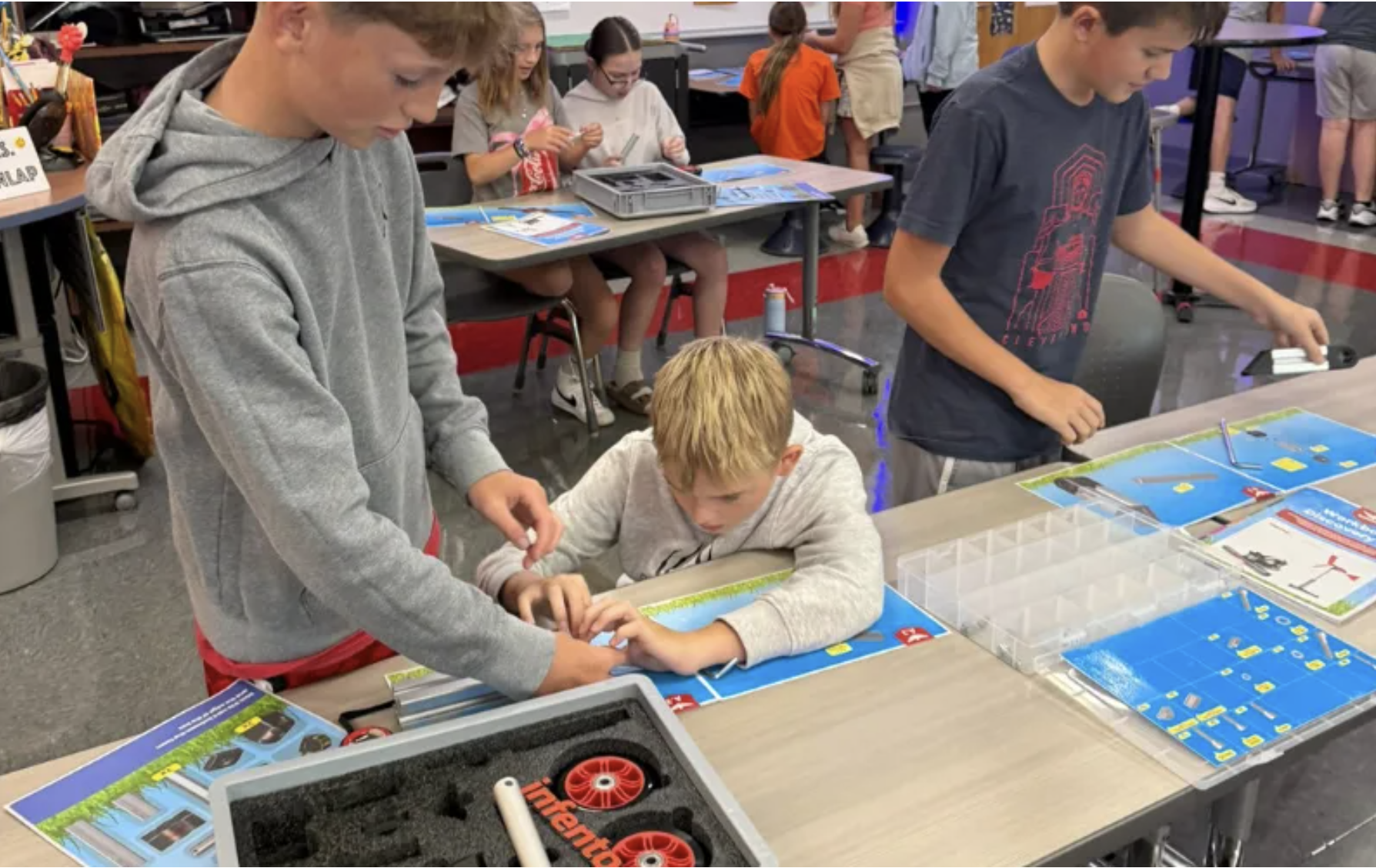A

t Lewis F. Mayer Middle School, sixth grade students don’t just learn about science, engineering, and technology - they put those disciplines into action.
In Kim Dunlap’s STEAM class, students design, build, test, and revise projects that spark creativity and prepare them for projects and coursework in multiple areas in the future.
STEAM Education is a way of learning “that uses Science, Technology, Engineering, the Arts and Mathematics as access points for guiding student inquiry, dialogue, and critical thinking,” according to the Institute for Arts Integration and STEAM.
This methodology focuses on not just the final result of a project but also how students problem solve and communicate to achieve their goals.
“Students need to think for themselves, figure things out, and have patience with problem-solving,” Dunlap explained. “I usually tell them that they’ll get frustrated, but it’s OK, and that they’ll get it, and understand it. And when they do get it, it’s so cool to see when that happens.”
One example of problem-solving in STEAM centers around Ozobot robots.
“They learn how to program the Ozobot, that’s the first part of the project,” Dunlap stated. “After learning how to do that, they create their obstacle course. The goal is to program the Ozobot to maneuver the Ozobot through their course successfully.”
The Ozobot course is created and assembled solely by students using Dunlap's parameters.
“They build and design a course with whatever theme they want,” she explained. “They put the code into the computer, and it uploads to the Ozobot, and it does what they tell it to do. So it’s good because if they get too many steps forward, they have to do fewer steps. Or maybe they have to do more steps forward, so they have to go back and reprogram it. It’s patience and trial and error, and they’re really good at it by the time they are done.”
Another project requiring critical thinking and hands-on building is assembling Infento kits. These kits allow students to collaborate and discuss how to build life-size vehicles using hands-on skills and parts.
Sometimes, it doesn’t go as planned.
“If something doesn’t work, they have to take it apart and work backwards,” Dunlap said. “So, what happened? Did they use the wrong screw? Why isn’t this working? It’s cool because when they figure out what they did wrong, it’s really that light bulb moment.”
“In STEAM class last year, we had lots of fun and hands-on projects,” seventh-grade student Katelynn said. “One of my favorites was the Infentos, where we had a bunch of little pieces and parts, an instruction book, and we built a whole bunch of cool tools, items, and inventions. Overall, the class was very fun and I really liked the atmosphere, activities, and the teacher in STEAM.”
Students also engage in bridge-building activities, architecture kits, Battle Bot competitions, and video game creations throughout the school year. Each project involves creative critical thinking, organizational skills, and communication.
“One of my favorite activities was the Bloxels, as it was very fun to design and make games, and then share them with people,” Adam, a seventh grader, explained. “I also found Battlebots very fun because I got to design a robot with my partner, and then use it to destroy other people’s robots.”
“Some things I really loved about the STEAM class were the activities,” Nora, a former student in the class, explained. “Every day was fun! Tynker was a big part of our STEAM class. It taught coding and creativity. We also coded these small robots to drive through a course. That was very fun also! I want to thank Mrs. Dunlap for being a great teacher!”
Some students will take their STEAM skills to the next level, enrolling in Project Lead the Way engineering classes in 7th and 8th grade, joining Stagecrafters to design and build sets, or perhaps later enrolling in engineering classes at FHS.
“It’s neat - I love that they get to do some of these experiences that they might not get to do,” Dunlap said.